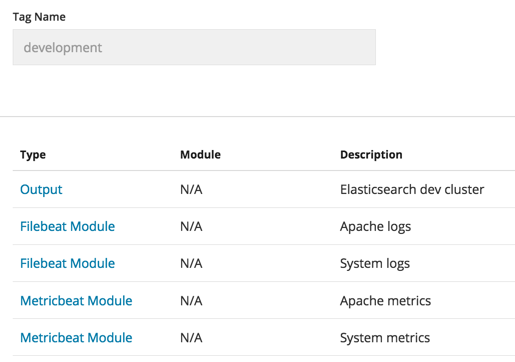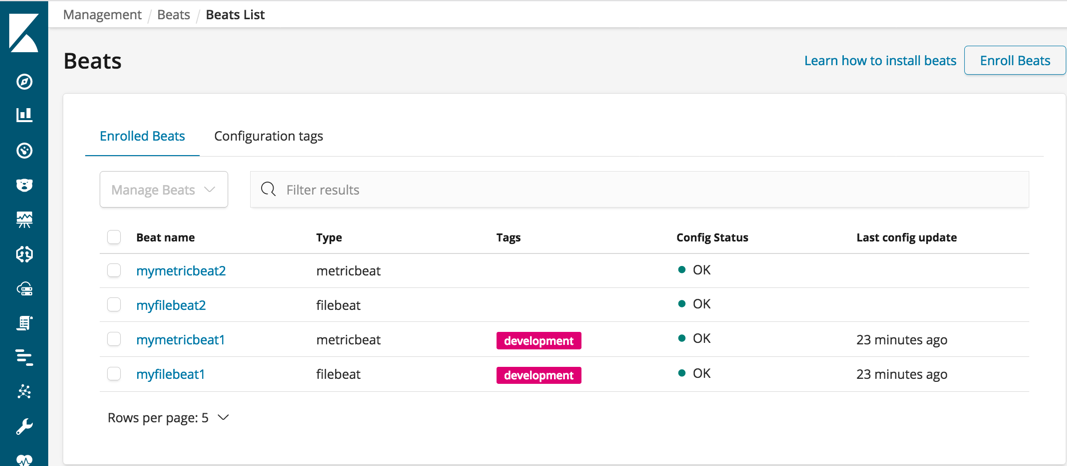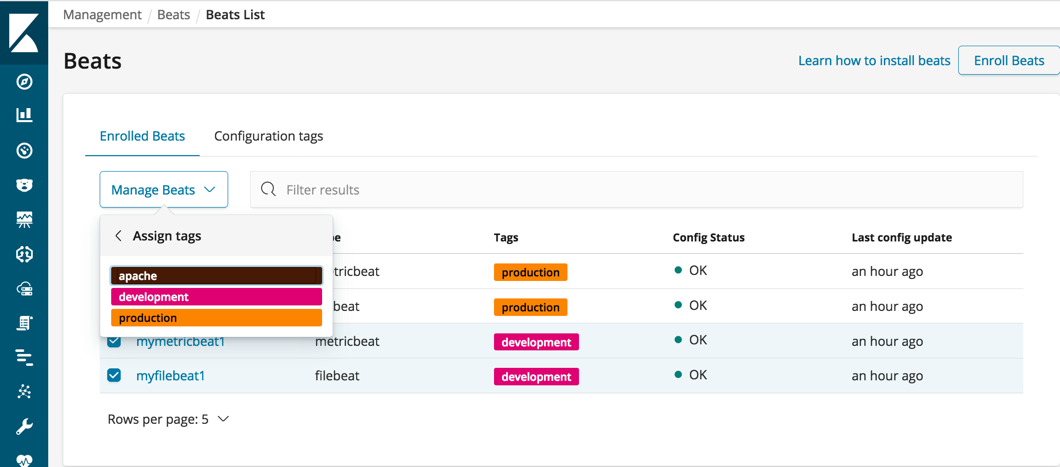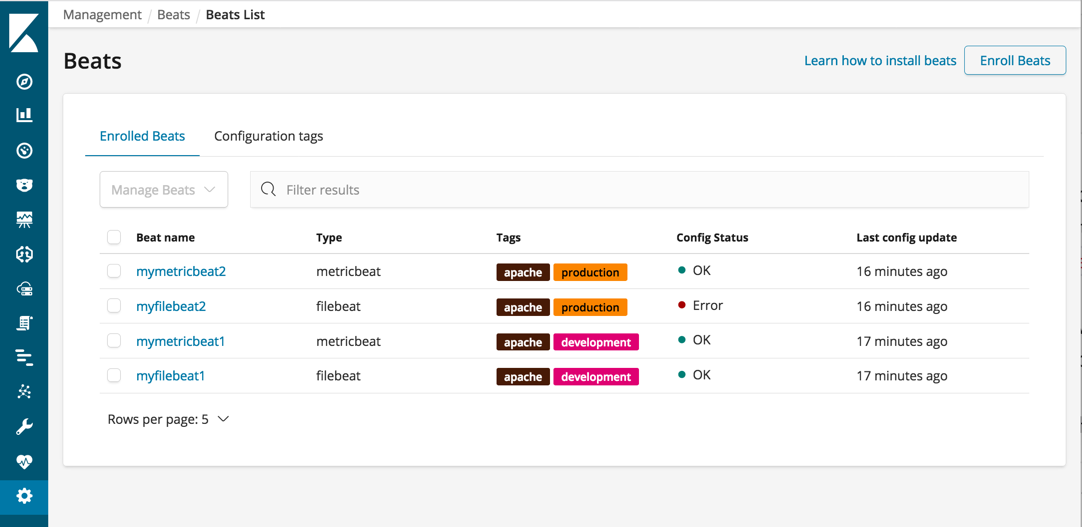- Filebeat Reference: other versions:
- Filebeat overview
- Quick start: installation and configuration
- Set up and run
- Upgrade
- How Filebeat works
- Configure
- Inputs
- Modules
- General settings
- Project paths
- Config file loading
- Output
- Kerberos
- SSL
- Index lifecycle management (ILM)
- Elasticsearch index template
- Kibana endpoint
- Kibana dashboards
- Processors
- Define processors
- add_cloud_metadata
- add_cloudfoundry_metadata
- add_docker_metadata
- add_fields
- add_host_metadata
- add_id
- add_kubernetes_metadata
- add_labels
- add_locale
- add_network_direction
- add_observer_metadata
- add_process_metadata
- add_tags
- community_id
- convert
- copy_fields
- decode_base64_field
- decode_cef
- decode_csv_fields
- decode_json_fields
- decompress_gzip_field
- detect_mime_type
- dissect
- dns
- drop_event
- drop_fields
- extract_array
- fingerprint
- include_fields
- rate_limit
- registered_domain
- rename
- script
- timestamp
- translate_sid
- truncate_fields
- urldecode
- Autodiscover
- Internal queue
- Load balancing
- Logging
- HTTP endpoint
- Regular expression support
- Instrumentation
- filebeat.reference.yml
- How to guides
- Override configuration settings
- Load the Elasticsearch index template
- Change the index name
- Load Kibana dashboards
- Load ingest pipelines
- Enrich events with geoIP information
- Deduplicate data
- Parse data by using ingest node
- Use environment variables in the configuration
- Avoid YAML formatting problems
- Beats central management
- Modules
- Modules overview
- ActiveMQ module
- Apache module
- Auditd module
- AWS module
- Azure module
- Barracuda module
- Bluecoat module
- CEF module
- Check Point module
- Cisco module
- CoreDNS module
- Crowdstrike module
- Cyberark module
- Cylance module
- Elasticsearch module
- Envoyproxy Module
- F5 module
- Fortinet module
- Google Cloud module
- Google Workspace module
- GSuite module
- haproxy module
- IBM MQ module
- Icinga module
- IIS module
- Imperva module
- Infoblox module
- Iptables module
- Juniper module
- Kafka module
- Kibana module
- Logstash module
- Microsoft module
- MISP module
- MongoDB module
- MSSQL module
- MySQL module
- MySQL Enterprise module
- nats module
- NetFlow module
- Netscout module
- Nginx module
- Office 365 module
- Okta module
- Oracle module
- Osquery module
- Palo Alto Networks module
- PostgreSQL module
- Proofpoint module
- RabbitMQ module
- Radware module
- Redis module
- Santa module
- Snort module
- Snyk module
- Sonicwall module
- Sophos module
- Squid module
- Suricata module
- System module
- Tomcat module
- Traefik module
- Zeek (Bro) Module
- Zoom module
- Zscaler module
- Exported fields
- ActiveMQ fields
- Apache fields
- Auditd fields
- AWS fields
- aws-cloudwatch fields
- Azure fields
- Barracuda Web Application Firewall fields
- Beat fields
- Blue Coat Director fields
- Decode CEF processor fields fields
- CEF fields
- Checkpoint fields
- Cisco fields
- Cloud provider metadata fields
- Coredns fields
- Crowdstrike fields
- Cyber-Ark fields
- CylanceProtect fields
- Docker fields
- ECS fields
- Elasticsearch fields
- Envoyproxy fields
- Big-IP Access Policy Manager fields
- Fortinet fields
- Google Cloud Platform (GCP) fields
- google_workspace fields
- gsuite fields
- HAProxy fields
- Host fields
- ibmmq fields
- Icinga fields
- IIS fields
- Imperva SecureSphere fields
- Infoblox NIOS fields
- iptables fields
- Jolokia Discovery autodiscover provider fields
- Juniper JUNOS fields
- Kafka fields
- kibana fields
- Kubernetes fields
- Log file content fields
- logstash fields
- Microsoft fields
- MISP fields
- mongodb fields
- mssql fields
- MySQL fields
- MySQL Enterprise fields
- NATS fields
- NetFlow fields
- Arbor Peakflow SP fields
- Nginx fields
- Office 365 fields
- Okta fields
- Oracle fields
- Osquery fields
- panw fields
- PostgreSQL fields
- Process fields
- Proofpoint Email Security fields
- RabbitMQ fields
- Radware DefensePro fields
- Redis fields
- s3 fields
- Google Santa fields
- Snort/Sourcefire fields
- Snyk fields
- Sonicwall-FW fields
- sophos fields
- Squid fields
- Suricata fields
- System fields
- Apache Tomcat fields
- Traefik fields
- Zeek fields
- Zoom fields
- Zscaler NSS fields
- Monitor
- Secure
- Troubleshoot
- Get help
- Debug
- Common problems
- Can’t read log files from network volumes
- Filebeat isn’t collecting lines from a file
- Too many open file handlers
- Registry file is too large
- Inode reuse causes Filebeat to skip lines
- Log rotation results in lost or duplicate events
- Open file handlers cause issues with Windows file rotation
- Filebeat is using too much CPU
- Dashboard in Kibana is breaking up data fields incorrectly
- Fields are not indexed or usable in Kibana visualizations
- Filebeat isn’t shipping the last line of a file
- Filebeat keeps open file handlers of deleted files for a long time
- Filebeat uses too much bandwidth
- Error loading config file
- Found unexpected or unknown characters
- Logstash connection doesn’t work
- Publishing to Logstash fails with "connection reset by peer" message
- @metadata is missing in Logstash
- Not sure whether to use Logstash or Beats
- SSL client fails to connect to Logstash
- Monitoring UI shows fewer Beats than expected
- Dashboard could not locate the index-pattern
- Contribute to Beats
How central management works
editHow central management works
editBeats central management uses a mechanism called configuration tags to group related configurations. You define configuration tags in the Central Management UI in Kibana after enrolling your first beat.
A configuration tag is a group of configuration blocks that you can apply to
one or more Beats. A tag can have configuration blocks for different types of
Beats. For example, you might have a tag called development that you use to
group all configurations that are valid for running Beats in your development
environment. The development tag might have:
- Two Metricbeat module configuration blocks: one that reads system metrics and another that reads metrics from Apache HTTP servers
- Two Filebeat module configuration blocks: one that reads Apache HTTP server logs and another that reads system logs
- One heartbeat monitor configuration block: checks that a public facing website is live.
- One Elasticsearch output configuration block that sends the output to your Elasticsearch development cluster

You apply the tag to any Beats that will use the configurations defined in the tag.

When the enrolled Beats run, each Beat uses the configuration blocks that are valid for its type.
You can add, modify, or remove configuration blocks from a tag. Any changes that you make to the configuration blocks in a tag are automatically applied to all Beats that have that tag.
You can add or remove tags to change the set of configuration blocks applied to
your Beats. For example, after you’ve tested configurations in your
development environment, you can remove the development tag and add a
production tag that has an Elasticsearch output configuration block for sending the
data to your production cluster.

You can apply multiple tags to a Beat. For example, instead of defining the
apache modules under the development tag as described earlier, you could
create a separate tag called apache that contains the Apache module
configurations, then apply the tag to all Beats running on Apache servers.
This would enable you to maintain your Apache module configurations under a
single tag, while also using a development tag to send output for some
instances to your development cluster.

You can apply as many tags as you need. Just keep in mind that the configurations for all assigned tags are merged, which means that you should not specify conflicting configurations. If there are errors in the configuration, you’ll see an Error status in the Central Management UI and need to look at the logs for the Beat to troubleshoot the problem.